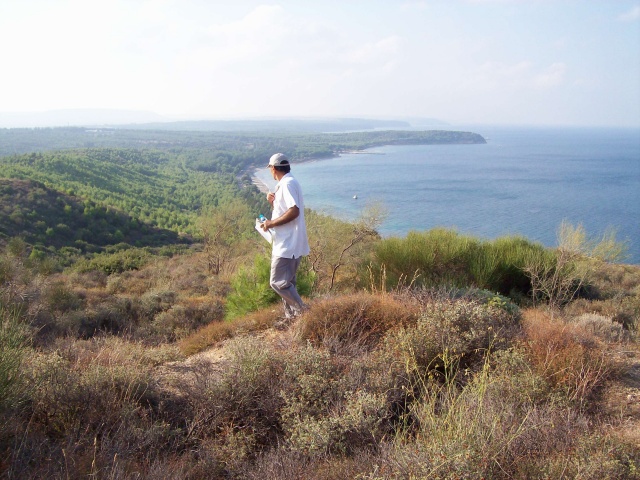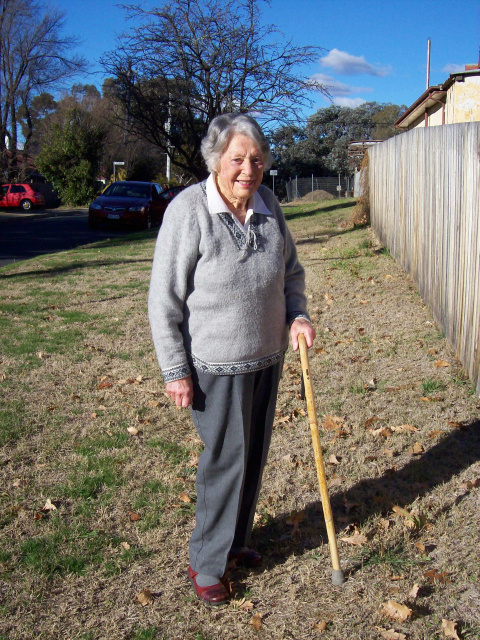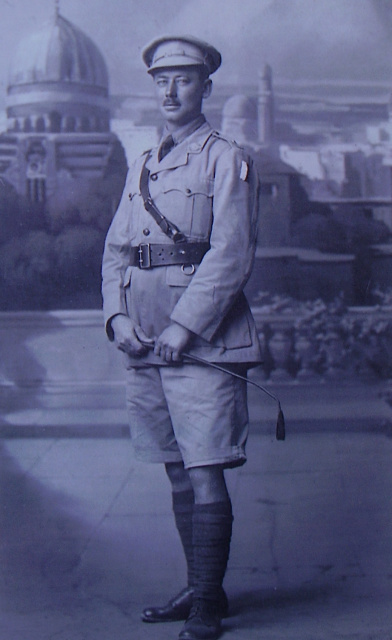For Love of Country home
For love of country in war and peace
Honest History, 7 June 2016
Gentle Reader reviews Anthony Hill’s For Love of Country.
This book is described on the cover as ‘a true Australian family story of love, war and the ultimate sacrifice’ and the contents are exactly what the blurb says. The book is in three parts: World War I; the inter-war period in the Canberra area; World War II and afterwards. It is a deft combination of family story, local history and war memoir, well-written by the experienced, Canberra-based, Anthony Hill (author of The Story of Billy Young and a number of books for children and young adults).
Walter Eddison arrives in Australia just before World War I as an immigrant from England, newly married, though his wife, Marion, remains in England with the intention of emigrating, too. But war breaks out and Walter heads back to the Northern Hemisphere with the 56thBattalion, where he serves at Gallipoli, on the Western Front and in the Middle East. Whatever illusions he held about the glories of war service fall quickly away. Hill brings out this change particularly well. ‘This is a terrible war & I pray it will soon be over’, writes Walter to the mother of a dead comrade.
 Hill paints a picture of the awfulness of war, the terrible loss of life, the pointlessness. He makes no attempt to dress up something that should never be dressed up. He repeats a point that others have made – the experience was so awful that men could only speak of it to other men who had been through it, because only they could understand – but adds an additional, thought-provoking gloss: soldiers’ inability or unwillingness to talk protected their families from even a second-hand glimpse of war.
Hill paints a picture of the awfulness of war, the terrible loss of life, the pointlessness. He makes no attempt to dress up something that should never be dressed up. He repeats a point that others have made – the experience was so awful that men could only speak of it to other men who had been through it, because only they could understand – but adds an additional, thought-provoking gloss: soldiers’ inability or unwillingness to talk protected their families from even a second-hand glimpse of war.
Gallipoli, looking down from the ridge
Except, one feels that the families must have wondered at their fathers’ and brothers’ moods and melancholy and, often, their violence. Still, the failure in so many families to pass on stories of horrors may have helped perpetuate the sanitised legacy of war, encapsulated in the platitudes about passing on instead ‘the torch of remembrance’ to new generations: don’t know, just remember. Such families are particularly susceptible to gloopy Anzackery.
After the Great War, the Eddisons, Walter and Marion, and soon three boys and three girls, struggle to make a go of a soldier settler block where Canberra’s Woden Valley suburbs sit today. They try different types of farming, they struggle in the Depression, they see neighbours walk off their blocks and they extend themselves to take up new leases, even though the costs are high, because the lease rates were set in good times. They see the commencement of the Australian War Memorial in Canberra in 1929, then the delays in building it as the economic slump hits. (The Memorial is finally opened in November 1941, with another war well under way.)
The Eddisons’ eldest son, Tom, is smitten by the flypast of Avro planes at the opening of Parliament House in 1927 and hatches a long-term plan to become a flyer. When war breaks out, he tries for the RAAF, misses out, makes it into RAF Bomber Command, is shot down over the Netherlands and it is some time before his family knows of his death. The second son, Jack, is turned down by his beloved, fudges his eyesight test, gets into the army, is captured in New Guinea, and dies in a prison camp in Japan. It is two years before his family knows his fate. Third son, Keith, starts off training others to fly in the RAAF but then is accepted for operations, despite a TB scar on a lung, and flies Beauforts. He is listed as ‘missing believed killed’ and his family never hears from him again.
In May 1943 Walter and Marion heard that Tom’s grave had been found in Holland. Keith died later in May and Jack died on 7 June. Three Eddison sons, three dead. The Eddison parents had clung to their property, despite difficulties, so they could pass the farm on to their sons. There was no hope of that now. The parents and daughters Diana, young Marion and Pamela, did their best to get on with their lives. Many years later, a park next to the Woden Cemetery (where Walter is buried), near the location of the family property ‘Yamba’, is named Eddison Park. It contains a skate park for children. Yamba Drive sweeps past, down towards Tuggeranong. On the other side of Canberra there is an Eddison Place.
After the war Walter and Marion travel overseas and visit Tom’s grave. The last surviving Eddison daughter, Pamela Yonge, helps Anthony Hill with material for the book. Among her papers is the poem written by a fellow soldier for the men who died with Jack Eddison in Naoetsu camp in Japan:
When days were gray, their tired yet steadfast eyes
Would turn to gleaming sands and rolling plains,
To wheat fields kissed by gentle southern rains,
And gum trees nodding under azure skies.
The armchair strategists and urgers, uniformed or elected, who weigh the odds for and against future military adventures should consider whether they are prepared to run the risk of such lines having to be recited over the victims of their new wars.
This book emphasises yet again the importance of individual and family stories as an antidote to the thoughtless mass-produced and mass-targeted hype that has characterised much of Australia’s commemoration in recent years. Hill’s book leaves us not with ‘a warm fuzzy feeling’ (as the commemoration industry seems to prefer) or surges of patriotic fervour, but with other feelings altogether.[1]
Gentle Reader is a Canberra lawyer.
[1]Bruce Scates writes in his World War One: A History in 100 Stories (2015) of a senior public servant saying that what the public wanted from the Anzac centenary was ‘a warm fuzzy feeling’, not stories of horror but ‘a positive nation-building narrative’.
****
For a love of country - a slice of Canberra's history:
Eddison family book launch
The Canberra Times, Sydney Morning Herald
March 23, 2016
By Amanda Copp
A century ago, when the nation's capital was just beginning, the Eddison family lived in what is now the Woden Valley.
After surviving gas attacks and many other challenges that went with World War I in Britain, Walter Eddison picked up his family and moved to Australia hoping to find a new and more peaceful life.
On what was then the outskirts of Canberra, now the bustling Woden town centre, Walter and his wife Marion lived with their three sons and their three daughters, one of whom, Pamela, is still alive today.
At a book launch at Canberra Grammar School on Wednesday Anthony Hill presented his newly-bound book to a crowd full of Canberra's human history.
 Speaking to a room of historians, returned servicemen and the ancestors of Canberra's original settlers, Hill talked of what the fine capital was like in the early 1920s.
Speaking to a room of historians, returned servicemen and the ancestors of Canberra's original settlers, Hill talked of what the fine capital was like in the early 1920s.
"As far as they [the settlers] were concerned it was just a large sheep paddock," Hill said.
"Gradually the city expanded until the mid-60s," he said.
"The houses spilled into the valley, from Hughes and Curtin.
"When the Eddisons arrived, there were about 1000 people living in Canberra. They hadn't even begun to build it properly."
Pam Yonge, Queanbeyan 2012
Canberra icons like the Yarralumla Brickworks and Cotter Dam had been built, but building had temporarily stopped when World War II hit.
The war brought a slowdown for the construction of a capital but brought tragedy to the Eddison family. Pamela Yonge is the last surviving member of that generation of her family, as the daughter of Walter Eddison.
"Well we just grew up on a farm. Rode our horse to school," Mrs Yonge said.
The family's legacy is dotted all over Canberra.
Woden shopping centre itself was once an orchard on the Eddison's homestead called Yamba.
There is Eddison Park in Woden, Yamba Drive that cuts through the Woden Valley and Woden Cemetery where Walter Eddison is buried.
Mr Hill said a lot of the names now known in the valley were named after the family's surrounding properties.
"Melrose was one, Yarra Glen was another, [and] Narrabundah," he said.
"The names are very much part of the landscape.
"Not just prime ministers, but people."
Photos credit:
Pam at Queanbeyan 2012, photo by he author.
Photo with original article:
* Canberra Grammar Eddison House Year 11 student Thomas Hart, With Pamela Yonge (sister of Pete, Jack, and Tom Eddison) with author of 'For love of country', Anthony Hill. Photo: Rohan Thomson
Pamela Yonge (sister of Jack, and Tom Eddison) with author of 'For love of country', Anthony Hill. Photo: Rohan Thomson
****
'A word picture about Australia's evolution in the 20th century...'
Compelling, thoroughly researched...
From Dymocks web site
Review by 'John'
Gas! Was it tear gas, was it phosgene, was it mustard? The alarm had been raised. He donned the box respirator, setting it securely, as instructed and as trained. And yet the gas got in. The army said ‘very few’ ever showed leakage in testing, but he got one of those that did.
 It was mustard gas. As breathing became more difficult and he coughed up mucus, the need to tear the mask off became ever greater but, when he tried, he was restrained by the hands of medical orderlies. “No, sir! I wouldn’t do that if I was you, sir!” “Leave me alone!” “Not on your life, sir!”
It was mustard gas. As breathing became more difficult and he coughed up mucus, the need to tear the mask off became ever greater but, when he tried, he was restrained by the hands of medical orderlies. “No, sir! I wouldn’t do that if I was you, sir!” “Leave me alone!” “Not on your life, sir!”
For Love Of Country, by Anthony Hill, is the hugely entertaining story of Captain Walter Herbert Eddison, ‘Bertie’ as he was known within the family.
Returned to Blighty from Villers-Bretonneux to England, he saw out the balance of World War One and was repatriated to Australia.
Walter Eddison, Egypt, 1916
This is more than the story of one family. It is an historic work that parallels the development of Canberra as the national capital, recounts tales about soldier settlement, farm development, bureaucracy, rent paid at 6/3 an acre (I won’t explain that, anyone over sixty will understand) and how people struggled through the Great Depression.
It is a word picture about Australia’s evolution in the 20th century, drawn principally on the Eddison family and those about them. At times, it is able to provide a poke in the eye to bureaucratic bungling… but it tells, too, of the most appalling tragedy any family might ever bear.
Walter Eddison came from a well-to-do English industrial family but, like his father before him, did not possess the best business head. Married, needing the means to support a young wife, Marion, and growing family, Walter departed England for New South Wales, leaving his dependents behind while he sought, literally, greener pastures. War was declared while the ship steamed its way to Australia where, with only momentary hesitation, he joined up, finding himself sent to Egypt, then Gallipoli and, finally, France.
Following convalescence in England, Walter was due for repatriation to Australia (because it’s where he enlisted), once again leaving his family behind. However, he convinced authorities of the sense in allowing his emigrating family to sail with him to Australia. They were able to depart together.
Life in Australia was hard. As a returned serviceman, Walter, or Captain Eddy as many knew him, was granted soldier settlement acreage close by the planned and slowly emerging national capital, Canberra. Property ownership and development were forever a battle, mostly due to the difficulty in understanding the country and climate, establishing suitable farming practices (for example, whether best to crop, graze, milk or plant fruit trees), and making enough to pay the rent due the government, for the land was leashold, not freehold.
He and Marion had their battles even to the extent of Walter droving for other settlers to eke out their existence. He was a hard worker, always prepared to take on whatever needed to be done, but forever mindful of how far he could push his gas damaged lungs.
Through the 1930s, Europe was simmering into ever greater tension. During their discussions at home, “…for Walter and Marion, it seemed inconceivable that ‘the war to end all wars’ had been an illusion.” World War Two came about and, barely two decades on, three sons headed off to fight as their father had before them.
For Love Of Country is compelling. It is thoroughly researched and well written, with much information coming from Eddison family archives, including photographs and official papers of the time. It is an engaging look at our history, providing detail, some of which we may have heard before, but given a more subjective reality by looking at events through the eyes of one particular family.
****